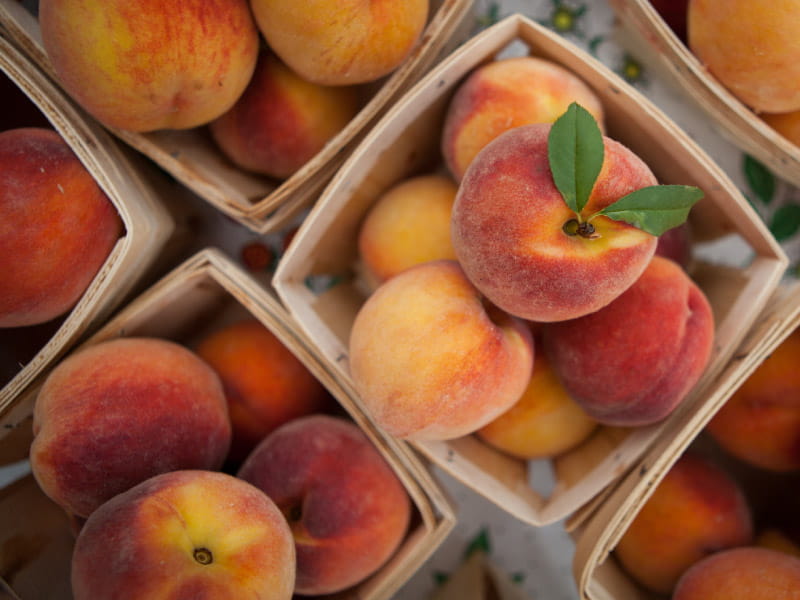Fuzzy and full of nutrients, peaches are a summertime staple
By Will Pry, American Heart Association News

Typically in season from July to September, peaches are a staple of summertime salads, meals and desserts. They're also a popular choice for nutritionists, who say their sweet taste makes it easier for people to add them to their diet.
"They're in season for a fairly short time, so enjoy them as a fruit choice when locally grown peaches are available," said Judith Wylie-Rosett, a professor emerita in the department of epidemiology and population health at New York's Albert Einstein College of Medicine.
Known for their golden orange color and delicate, fuzzy skin, peaches are packed with vitamin C and other antioxidants, which research suggests may help prevent heart disease, stroke and cancer. The fresher and more ripe they are, the more antioxidants they contain.
They're low in fat, high in potassium and free of cholesterol and sodium. They also are loaded with fiber, both soluble and insoluble, which improves satiety and can contribute to good digestion and gut health.
Peaches work well when paired with any number of foods. They can be added to salads or served with a scoop of yogurt. Peaches also can add a surprisingly sweet taste to salsa, be blended into beverages like tea or smoothies, or even grilled in a kabob with other fresh fruit.
"We're trying to increase people's adoption of healthier diet patterns, but taste is a huge part of why we eat," said Maya Vadiveloo, an associate professor in the department of nutrition and food sciences at the University of Rhode Island in Kingston. "When you eat fruit and things that are in season, it's much tastier and adds variety to your diet."
Dried peaches are available year-round, with much of the nutritional value still intact. But removing the water concentrates the fruit's sugar content – which makes it harder to feel full and easier to eat too much.
Peach skin is edible and is the source of much of the antioxidants and fiber found in peaches, but it also may contain more pesticides than the flesh of the fruit. As with any produce, it's a good practice to wash peaches before eating them.
Peaches continue to ripen after being picked. Firm peaches may ripen over one to three days when stored at room temperature; they can last up to a week in the refrigerator.
If peaches are frozen shortly after being picked and before they ripen, they maintain their nutritional value. At least one study, published in the Journal of the Science of Food and Agriculture in 2012, found that canned peaches were just as healthy as fresh peaches. But make sure they are packed in their own juices and not in syrup with extra sugar.
Vadiveloo said peaches and other fruits also enhance the taste of vegetables – such as when paired with spinach or kale – which makes a healthy diet easier to adopt. "It's easier not to feel deprived when the fruit you are choosing is fresh and has good flavor," she said.
One way to incorporate peaches with other produce is by blending them into a smoothie – but be sure to monitor the overall amount when mixing them in, Vadiveloo said. A medium peach contains less than 50 calories, but those numbers add up quickly when several are added to a blender.
"Depending on the calorie count, a smoothie can be a meal substitute, so I would be looking to balance fruit with vegetables, low-fat dairy, nuts or nut butters," she said. "Just a little bit of frozen peach with a decent amount of spinach or kale really adds a nice element of sweetness."
If you have questions or comments about this American Heart Association News story, please email [email protected].





